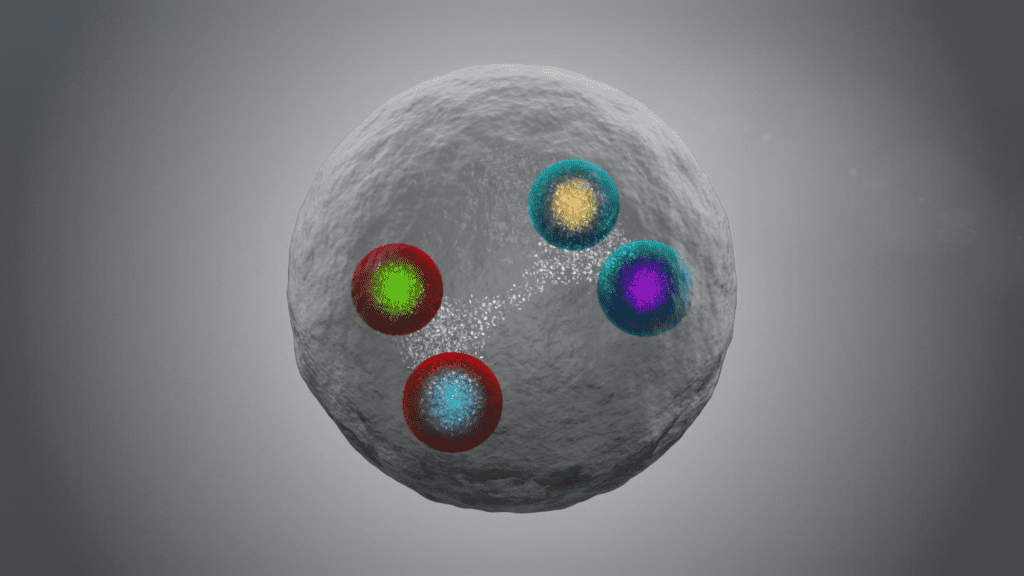Four quarks’ the charm, it seems, as CERN reported the discovery of a new physical particle created from four charm quarks — the ‘tetraquark’

Image credits CERN.
Although the discovery marks a major breakthrough in a decades-long research effort, the paper describing it has not yet been peer-reviewed, so take it with a grain of salt. It is, however, signed by over 800 researchers, part of the LHCb collaboration at CERN and was “presented at a recent seminar”.
Being newly-discovered, we don’t really know much about the tetraquark itself. However, it should help us better understand how quarks bind themselves together to form particles such as protons or neutrons.
Old particles, new tricks
Quarks are elemental particles — as far as we can tell, they are what everything is made of. We’ve observed them coming together into groups of two and three to form hadrons. We’ve also theorized that four- and five-quark hadrons exist.
“Particles made up of four quarks are already exotic, and the one we have just discovered is the first to be made up of four heavy quarks of the same type, specifically two charm quarks and two charm antiquarks,” says the Giovanni Passaleva, spokesperson of the LHCb collaboration.
“Up until now, LHCb and other experiments had only observed tetraquarks with two heavy quarks at most and none with more than two quarks of the same type.”
Such unusual particles are an ideal “laboratory” in which to study the strong interaction, one of the four known fundamental forces of nature. The strong interaction is what binds elemental particles together to form atoms and matter. A better understanding of the strong interaction could let us better estimate what particles should and shouldn’t be able to form under normal conditions.
The new tetraquark is ideal from this point of view as its a relatively simple particle against which we can test our current models. It is as of yet still unclear whether it’s a “true tetraquark” or not — that is, whether it’s a four-quark particle or two two-quark particles interacting in a molecule-like state.
The team found this tetraquark by looking for “bumps” — an excess of collision events over a known background value — in records from the first and second runs of the Large Hadron Collider, taken from 2009 to 2013 and 2015 to 2018 respectively. The bump has a statistical significance of more than five standard deviations, which, the authors explain, is the usual threshold for claiming the discovery of a new particle. The bump also corresponds to the predicted mass of four-charm-quark-particles.
The paper “Observation of structure in the J/ψ-pair mass spectrum” has been published in the pre-print level ArXiv.









